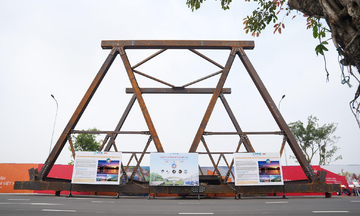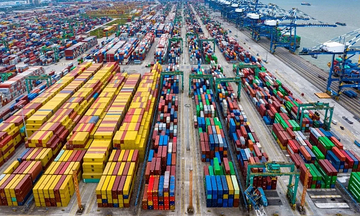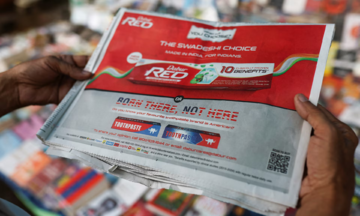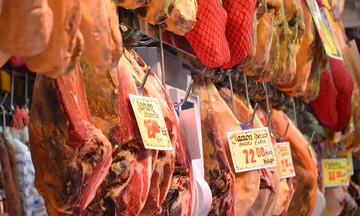According to Vietnam Customs, lychee export revenue reached nearly 35 million USD in July alone, 20 times higher than in July 2024. China remains the largest market, accounting for 71% of total exports with 57 million USD, a nearly four-fold increase. Papua New Guinea surprisingly climbed to second place with 6 million USD, a 21-fold increase compared to last year. Demand in discerning markets like the Netherlands, Australia, France, the US, and the UK also saw impressive growth, ranging from 38% to over 280%.
Several factors contributed to this surge in Vietnamese lychee exports: lower orchard prices, abundant yields, and a sharp rise in import demand. The expansion of VietGAP and GlobalGAP certified growing areas, meeting stringent standards set by Japan, the US, and the EU, also played a crucial role.
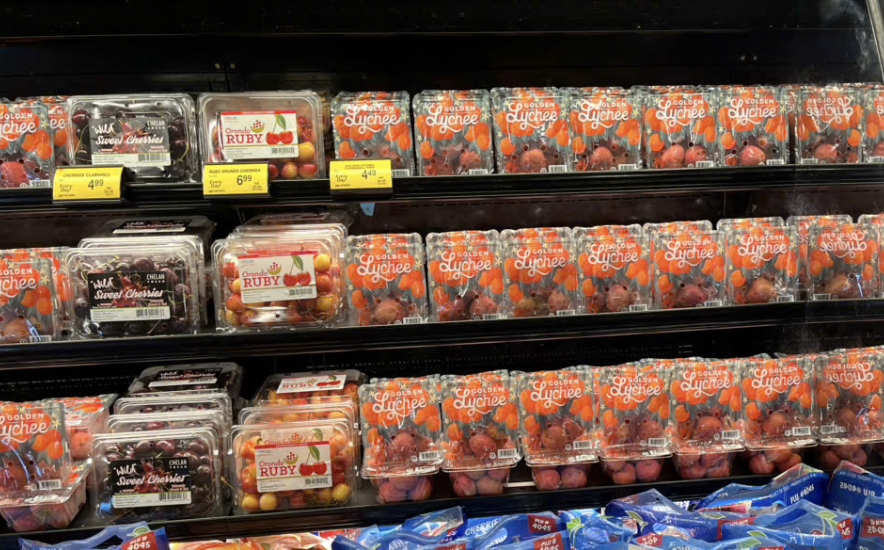 |
Lychees sold at a supermarket in the US. Photo: Vietnam Trade Office in San Francisco |
Lychees sold at a supermarket in the US. Photo: Vietnam Trade Office in San Francisco
This year marks the first time fresh Vietnamese lychees have been available at Costco, North America's largest retailer with over 635 stores in the US and Canada. Previously, Vietnamese lychees were only sporadically available in chains like Safeway. Securing a place at Costco is a major step forward, providing this summer delicacy with access to a global retail channel.
The Vietnam Trade Office in San Francisco stated it will continue supporting businesses to expand their product portfolios and introduce more Vietnamese agricultural products to the US market.
According to Dang Phuc Nguyen, General Secretary of the Vietnam Fruit and Vegetable Association, the quality of Vietnamese lychees has steadily improved thanks to modern preservation technology, extending their freshness. Many businesses have also established integrated supply chains, from production to consumption, improving both productivity and quality consistency.
In 2025, VietGAP and GlobalGAP certified lychee acreage continues to expand, meeting export standards for the US, Japan, and the EU. After irradiation treatment in Vietnam, lychees are shipped by sea to optimize preservation and maintain quality until they reach consumers.
Orchard prices for lychees this year range from 8,000 to 20,000 dong per kg. Batches with designated growing area codes and attractive packaging fetch 25,000 to 30,000 dong. At the start of the season, prices reached 35,000 to 40,000 dong. In international markets, Vietnamese lychees retail for around 200,000 to 300,000 dong per kg.
The Plant Protection Department forecasts a harvest of 303,000 tons of lychees for the 2025 season, a 30% increase compared to 2024, with Bac Giang alone accounting for 165,000 tons. Lychees are primarily grown in Bac Giang and Hai Duong, the two largest production centers in the country. Luc Ngan (Bac Giang) supplies over 100,000 tons annually, renowned for its large, sweet lychees; while Thanh Ha (Hai Duong) is known for its thin-skinned, thick-fleshed, fragrant, and sweet lychees, which have successfully entered the Japanese market since 2020.
Besides these two key regions, lychees are also grown in Quang Ninh, Hung Yen, and Hanoi, with some trial cultivations in the Central Highlands and Lam Dong. However, large-scale production has not yet been established in these areas due to unsuitable climatic conditions.
Thi Ha







